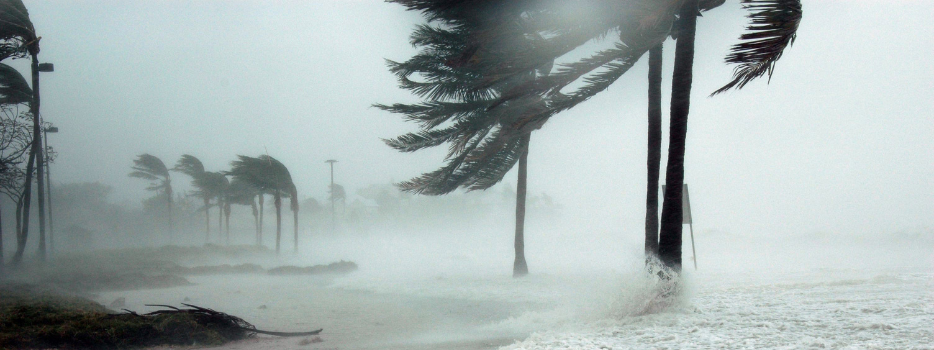With hurricane season upon us, it’s essential to understand and take seriously the power of these storms. If you’ve experienced a hurricane, you know the damage and destruction these storms cause. If you’ve just moved to, or plan to visit, a hurricane-prone area, it’s important to be aware.
Hurricane dangers
A hurricane doesn’t just produce wind. It can produce several hazards that can pose significant threats to life and property, including:
Storm surge
During a storm, this is a rise in water that’s larger than natural tides and above sea level. Depending on the location and natural elements, a storm surge can be 20 feet in one area and 10 feet in another. The surge can travel up to 25 miles inland and cause significant flooding. Storm surge creates massive destruction on the coast.
Rip currents
These can occur during normal weather conditions; however, a hurricane can intensify them even if the storm is far out at sea.
Flooding
This could be caused by the storm surge. Or, if you live inland, torrential rainfall can cause flooding to occur quickly due to overwhelmed sewer systems. Flooding can occur hundreds of miles inland.
Tornadoes
These are created by thunderstorms in the rain bands away from the eye or center of a hurricane.
Strong winds
These can send everyday items airborne, causing damage or injury.
Depending on which U.S. coast you live on, hurricane season runs from May 15 or June 1 to November 30.
Hurricane categories
If you’ve watched television coverage of a storm, it usually shows the storm track and then indicates what category of storm it is. Category determination is based on the Saffir-Simpson hurricane wind scale, which has a one to five rating.
Category Sustained wind Level of damage caused
1 74-95 mph Some or moderate
2 96-110 mph Extensive
3 111-129 mph Devastating
4 130-156 mph Catastrophic
5 157 mph or higher Catastrophic
Preparedness tips
- Download the Federal Emergency Management Agency (FEMA) app. This app provides real-time weather alerts, identifies emergency shelter locations, offers preparation tips for common hazards, and allows you to track your disaster assistance application.
- Watch local news reports. They provide details on how a storm will affect your local area and what you can do to stay safe.
- Create an evacuation plan. Evacuating before the storm hits provides the best opportunity for survival. However, the plan can be complicated. Documenting it and understanding it is critical. Coordinate your plan with work, school, and other family members. And don’t forget to consider your pet’s needs.
- Build an emergency kit. If you decide to stay and wait out the storm, be sure you have a robust emergency kit that includes water, non-perishable food, medications, and supplies for infants or pets. Click here to learn more from FEMA.
- Help one another. Assist your neighbors with preparation. They may not have the means to evacuate or prepare their homes. Being kind can make an enormous impact.
After the storm
- If you’ve evacuated, don’t return to your home until you've been given the all-clear from local officials.
- Assess the damage before doing any cleanup. Safety should be your main priority.
- Heart attacks are the leading cause of death during the cleanup process. Don’t work alone when cleaning heavy debris.
- Wear the appropriate gear to avoid injury from debris and foreign objects carried in by the storm.
- Watch out for wild animals such as snakes, rats, raccoons, and alligators that arrived via the flooding.
- Disinfect items that were inundated with floodwaters to prevent mold growth and contamination. Use a bleach solution or commercial-grade disinfectant.
- If you have neighbors who didn’t evacuate before the storm, check on them to ensure they’re okay.
- Take care of your mental health by seeking counseling or calling a helpline.






